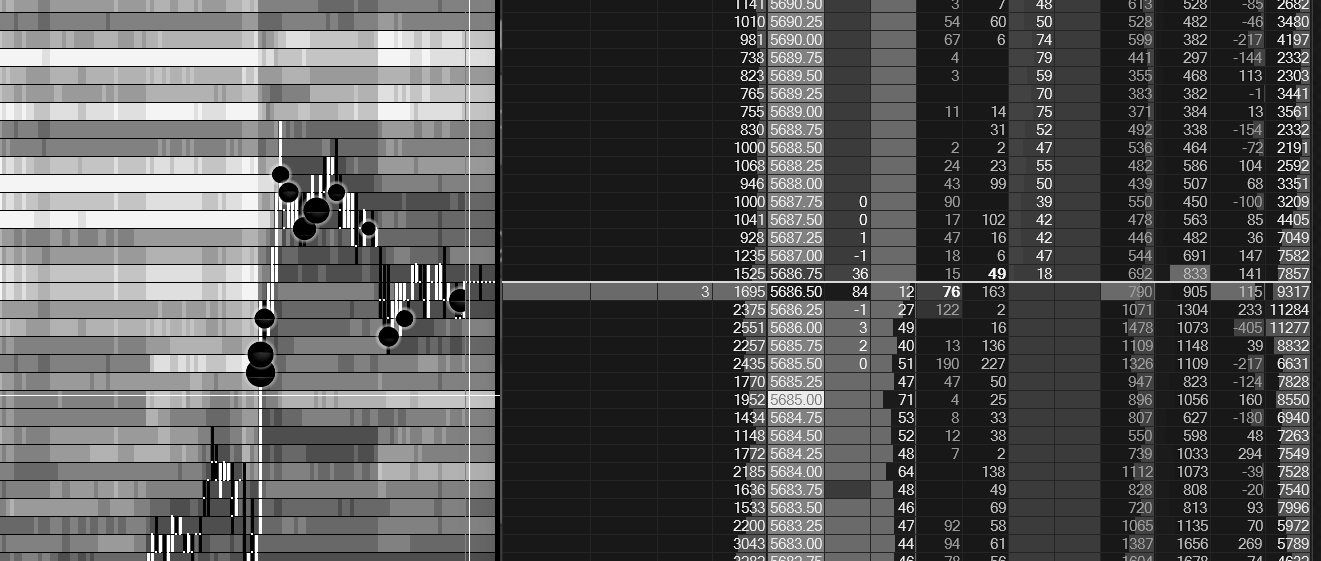What is Order Flow & Why You Need It

Most people see trading as a reaction game:
See green candle? Buy. See red? Sell.
Wait for confirmation. Hope for follow-through. But they don’t realize:
By the time price moves, the decision has already been made — by someone faster, smarter, more capitalized than you.
Order flow isn't about reacting to price.
It’s about understanding what causes price to move in the first place.
It’s a mindset shift:
You stop trying to chase outcomes.
You start trying to predict your opponent’s choices.
A Real Trader Doesn’t Watch Price — They Study Behavior
There are three things I’ve learned from order flow that changed how I see the market:
1. Learn the rules of the game
If you don’t know how orders are matched, how liquidity works, how the tape breathes —
then you’re playing blind.
You don’t need to code an HFT bot.
You just need to stop pretending candles tell the truth.
Understand what’s allowed, what’s not, and how large players hide their intent.
2. Study your opponents
You’re not trading in a vacuum.
Every decision you make depends on someone else taking the other side.
Order flow teaches you to think like this:
- Who just bought here? Were they chasing? Were they forced?
- Will they defend that position, or will they cut when it turns?
- If I enter now, am I becoming their exit liquidity?
This isn’t technical analysis. It’s psychological combat.
You don’t need to know where the market’s going.
You need to know where someone has no choice but to act.
3. Exploit their weakness, not your prediction
Great trades aren’t made because you guessed right.
They’re made because you saw someone else was wrong, and had no exit.
That’s where the real edge lies.
If you know retail traders will panic on a VWAP rejection,
you wait until they hit sell — and then you fade their fear.
If you see a false breakout that traps late longs,
you don’t chase it — you wait for their stop-loss to become your entry.
It’s not about being first.
It’s about being last — after everyone else is already trapped.
You’re Not Predicting the Market — You’re Predicting Behavior
Most trades fail, not because the trader is dumb,
but because they have no framework to interpret intent.
They rely on indicators, confirmation, "it feels right" —
but the market doesn’t care about feelings.
It rewards those who understand:
- Is this a real breakout, or just stop hunting?
- Is this liquidity being added, or pulled right before impact?
- Is volume building behind price, or lagging it?
Without these answers,
you’re not trading reality — you’re trading shadows.
Order Flow Isn’t the Holy Grail. It’s the Mirror.
It won’t fix a broken system.
It won’t make your emotions disappear.
But it will do one crucial thing:
Show you, in brutal clarity, exactly why your last trade failed —
And what the other side was doing while you were pressing buttons.
I used to think order flow was about being fast, clever, and right.
Now I know:
It’s about being patient, calm, and observant.
It’s about listening — not to price,
but to the pressure building under the surface.
And most of all,
it’s about asking the right question before you click:
“Who am I trading against — and what are they forced to do next?”
That’s when trading stops being gambling.
That’s when it becomes chess.